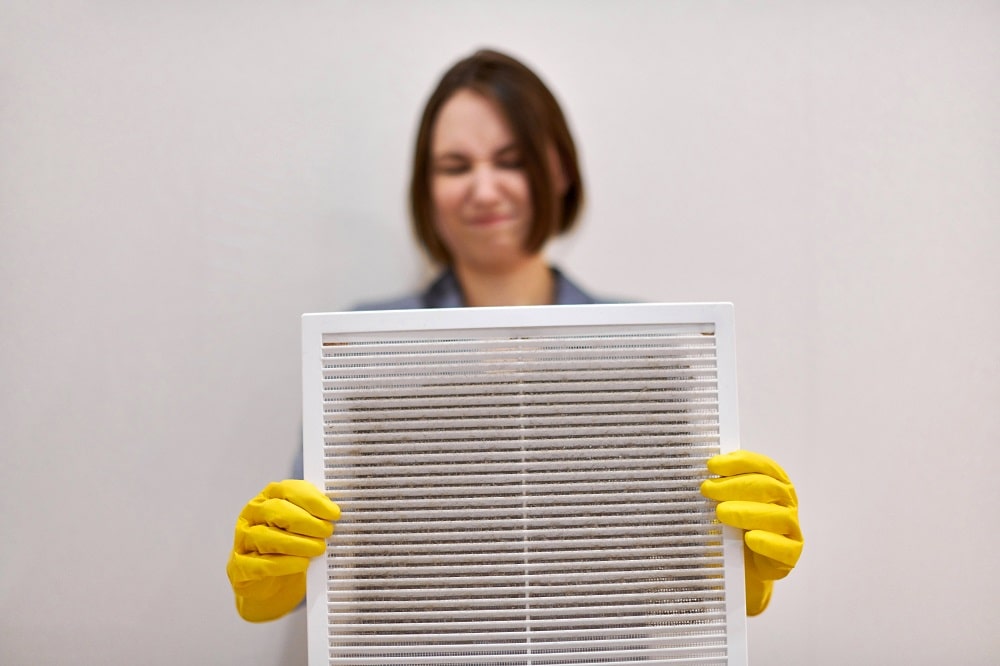Air filters are essential components of your home because they remove harmful airborne contaminants while keeping your HVAC system running efficiently. But when it comes to AC and air filters, you must understand the size you need. Air filters of all sizes are available for purchase here.
The Most Common Air Filter Sizes
Standard air filter sizes generally range from 1 to 6 inches in depth, while length and width are associated according to the depth. The most common air filter sizes include:
- 1-inch air filters: 10x30x1, 12x12x1, 12x20x1, 12x24x1, 12x30x1, 14x14x1, 14x18x1, 14x20x1, 14x24x1, 14x25x1, 14x30x1, 15x20x1, 16x20x1, 16x25x1, 16x30x1, 18x18x1, 18x20x1, 18x24x1, 18x30x1, 20x22x1, 20x23x1, 20x24x1, 20x25x1, 20x30x1, 24x24x1, 24x30x1, 25x25x1
- 2-inch air filters: 16x25x2, 20x20x2, 20x25x2
- 3-inch air filters: 16x25x3
- 4-inch air filters: 16x20x4, 16x25x4, 20x20x4, 20x25x4
- 5-inch air filters: 16x25x5, 20x25x5
- 6-inch air filters: 20x25x6
You have probably seen most of these sizes available at your local stores or online, mainly because they are the standard size of the return air vents in your house.
How to Tell if Your Air Filer Is the Wrong Size?
Many people install an improperly-sized filter without realizing what problems they may cause. For starters, a wrong-sized filter can affect the amount of pollutants and contaminants that are usually filtered out, causing poor indoor air quality. Moreover, a poorly installed air filter can cause your HVAC unit to work harder than it is supposed to, causing severe problems to your entire HVAC unit.
If you are concerned about your air filter installation, there are some indicators you should keep an eye out for:
- Hearing rattling noises may indicate that your filter is too small
- Forcing the filter into place to fit might be a sign that your air filter is too large
- If your home is dustier than usual, the air filter is too small
- If you notice bent corners when removing the air filter, it means it was too large
To avoid these, you can either check your unit’s specs to verify the air filter’s size, or you can measure the air filter yourself. To accurately measure your air filter, follow the scheme: L (length) x W (width) x D (depth)
Measure the air filters in inches to obtain the exact dimensions. In most cases, the size is written on the air filter, so you can go to a local store or order the same size online. The air filter should easily slide into the AC frame with a little room. You most likely need a different size if you need to force the filter into the frame or find there is too much space.
Finding the Perfect Fit
Regarding HVAC systems and furnace air filter sizes, most manufacturers estimate their sizes. This is known as the nominal size, and regardless of your chosen brand, the nominal size will be the same. However, it might help you understand how the nominal size differs from the actual size.
Nominal Size
The nominal size is a rounded estimate from manufacturers, and it’s usually displayed on the side of the air filter. After the production process, no two filters would have the same exact size. So, if the manufacturers measure the actual size of every filter, the various numbers may confuse buyers. For example, a 16 x 25 filter may actually have a measurement of 15 1/2 x 24 1/2. The nominal size creates consistency and adds peace of mind for shoppers. It’s also much easier to compare different filter models.
Actual Size
As the name implies, the actual size of a filter includes its exact size. Nominal filters tend to be 1/4″ to 1/2″ bigger than the actual size of the air filter. If you know the actual size of your filters, it will be easy to figure out the nominal size. Round up each air filter dimension up to the nearest inch, and you have the nominal size.
Final Thoughts
In addition to understanding the benefits of changing your air filter regularly—from improving your indoor air quality to preventing mold or alleviating allergies—you also need to know what filter size you need. Failing to buy the correct sized filter can lead to air seepage and lower filter effectiveness. Even worse, a wrong-sized air filter can put a lot of stress on your HVAC systems, causing higher energy bills or damaging your unit entirely.
Luckily, most manufacturers customize air filters to fit your HVAC system’s exact specifications. They also come with a high MERV rating to trap and remove as many airborne contaminants and particulates as possible.

